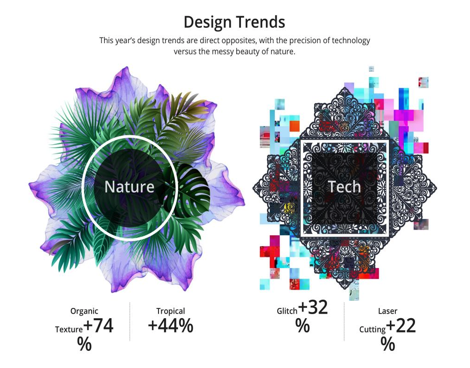Author: Leslie Carruthers / Source: Content Marketing Institute

This post was co-written by Shopify’s Casandra Campbell.
Content marketing can be a valuable tool for nearly any company, in nearly any industry, at nearly any point in the sales funnel. But with the glut of content available, how does a brand create and distribute content that allows the company (and the audience) to experience that value?
We sent out a request for examples of awesome content marketing via HARO and other channels. In this article, we highlight four out-of-the-box case studies that show how content marketing can be used to create true value.
Shutterstock’s annual Creative Trends infographic
Shutterstock is one of the largest online marketplaces for licensing royalty-free images, videos, and music. For its annual Creative Trends report, Shutterstock analyzes its customers’ search and download data to predict the styles and trends that will dominate the coming year and distributes results in the form of an infographic hosted on its site.


Results
Shutterstock reports its 2017 Creative Trends infographic earned:
- Mentions in more than 100 articles
- 6 billion unique site visits
- 5,300 social media shares, 11,000 social media engagements
Why we love it
Creating one piece of content to serve multiple audiences is usually a bad idea. By trying to serve too many types of reader, you typically end up making your content too broad and readers lose interest.
However, Shutterstock makes it work by using its proprietary data, which is already useful internally for predicting and serving consumer trends, to create something genuinely useful to two vital Shutterstock audiences:
- Contributors – the photographers, videographers, artists, and musicians who contribute content to its marketplace
- Customers – the individuals who purchase and download that content
Contributors get paid when their content is downloaded. Being on trend allows them to make more money. For Shutterstock customers, staying ahead of trends helps them ensure that the print materials, videos, and websites they are creating look fresh.
And, rather than cutting its data 1,000 ways to produce a lengthy downloadable report, Shutterstock stays true to its brand and delivers the information in a succinct, visually impactful format.
How to make this strategy work
- Focus on the value of your content to your audience. Content can only serve multiple audiences if it’s genuinely useful to multiple audiences.
- Consider using data you have rather than spending time and money building and promoting a survey.
- Don’t be afraid to share proprietary data if it could provide insights your audience can’t get anywhere else.
SEMrush’s Easter egg hunt
SEMrush is a leading competitive research toolkit for online marketing. It has more than 20 research tools for SEO, PPC, and content marketing, and an expanding list of features.
Although coming up with those new features hasn’t been a problem, telling its users about those new features has. SEMrush gamified its educational process with a virtual Easter egg hunt, challenging users to find 15 “Easter eggs” by completing desired actions within various SEMrush tools.
SEMrush scored a big social media win by making it easy for users to tweet their accomplishments.
Results
SEMrush reports its Easter egg hunt, launched in April 2017, earned:
- More than 9,300 participants
- 8 million Twitter impressions (16% of those who tweeted had 1,000-plus followers)
Why we love it
This is an awesome example of how companies can apply content marketing outside of customer acquisition. It was probably a hard sell to spend more money and development time building a sitewide scavenger hunt after SEMrush presumably spent a decent chunk of money developing new features.
Many of the best SaaS companies are using content marketing to drive customer success by creating user academies and certification programs. Gamification of the tool set guided users through adopting new features. It’s a novel, entertaining approach.
Finally, by making it easy for users to tweet their accomplishments, the SEMrush team scored a social media victory on…
Audience Team
The digital audience insights you need to build, manage and market to your digital audiences.

